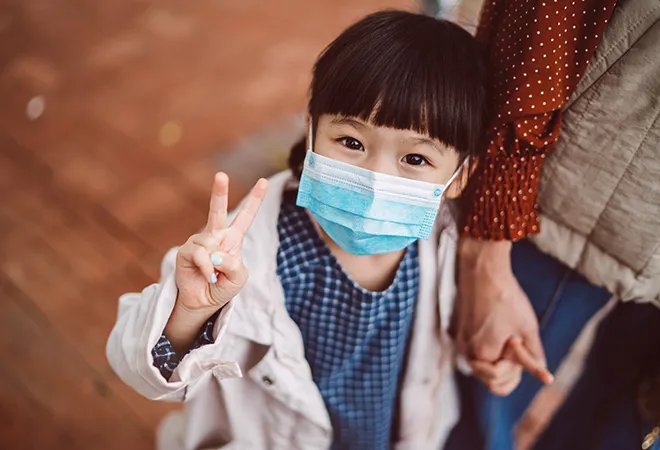
The Shock of Pandemic
The COVID-19 has brought unprecedented health threats to people around the world. More than 21 million people were infected by the virus and 760 thousand people died because of it. Besides that, the pandemic has also caused huge loss for the world economy since its outbreak. According to the World Health Organization press conference on 13 August, the global economy is losing 375 billion US dollars every month due to the virus, and the cumulative economic losses in the next two years will exceed 12 trillion US dollars.
Countries around the world have spent trillions of dollars to deal with the short-term impact of the epidemic. The G20 countries alone have spent more than 10 trillion US dollars of fiscal stimulus, which is more than 3.5 times of the total funds used in handling the 2008 financial crisis. It is also estimated that the next wave of impact caused by the epidemic will cost another 10 trillion dollars.
How is China dealing with COVID-19?
Close and efficient coordination mechanism and rapid disposal are important measures for China to win the anti-epidemic campaign. With the exception of sporadic newly diagnosed diseases, the mainland of China has nearly completely overcome the new epidemic. It is not only because China has a strong public health system, it’s because the whole country was involved in the fight against the pandemic. China's advantages in its fight against the virus include a coordinated mechanism under which various government departments worked together and scientists could have direct dialogue with state leaders.
Another factor in China's success was the speed with which close contacts of COVID-19 patients have been separated and isolated. This was why China has outperformed Western countries, although the latter may have more accurate and advanced nucleic acid testing agents and methods.
In fact, China has established a joint prevention and control system covering different ministries and commissions, and each province has initiated a public health emergency response to control the spread of the virus. Chinese government has introduced novel coronavirus pneumonia into class-A infectious diseases and the virus has been basically cut off. The lockdown policy implemented in Wuhan was correct and sensible, and it has effectively prevented the spread of Covid-19 to other parts of the country. The central government decisively decided to send 40000 medical staff from all over the country to Wuhan and Hubei province, effectively curbing the spread of the epidemic. At the same time, the joint prevention and control mechanism effectively ensures the adequate supply of medical equipment, materials, drugs and detection reagents. China has set up a good example of prevention and control and centralized treatment to the world.
Traditional Chinese Medicine (TCM) matters
The TCM has been playing the positive role of in treatment through preemptive prevention. The traditional Chinese medicine has been applied to treatment of patients with mild symptoms of Covid-19. Many Chinese medicine doctors have also joined the medical team of helping the critically ill patients, and at the same time prescribe the traditional Chinese medicine to the close contacts of the diagnosed patients to help them improve their immunity.
Due to the lack of vaccines and effective western medicine prescriptions, some traditional Chinese medicine and prescriptions were used to fight against the epidemic situation in Wuhan, and were gradually widely used. Chinese medicine can effectively relieve symptoms of Covid-19 patients, prevent worsening of the disease, improve the cure rate and reduce the mortality rate.
Vaccine
Vaccine plays an important role in the infection control and treatment of COVID-19. Currently, six vaccines are undergoing clinical trials on the Chinese mainland. The third phase of international clinical trials is underway for a recombinant COVID-19 vaccine developed by Chinese researchers. Developed by a team at the People's Liberation Army (PLA) Academy of Military Medical Sciences, the vaccine was one of the first to enter the first and then the second phase of clinical trials domestically and internationally. According to Chinese leading respiratory expert Zhong Nanshan, a COVID-19 vaccine could be put into emergency use as early as this fall.
Once the vaccine is released, China will make it available to the entire population, especially the poor, who may not be able to afford it.
Challenges in the future
Due to the COVID-19 virus, the postponed college entrance examination were eventually held in July 2020. Also in this unforgettable July, China's economic performance in the first half of 2020 was released on schedule. According to the data released by the National Bureau of Statistics in comparison with 2019, China's GDP fell by 1.6% in the first half of this year. Among them, GDP in the first quarter decreased by 6.8 percent, while in the second quarter it increased by 3.2 percent. It is indicated that the Chinese economy is getting out of the negative influence of COVID-19 crisis.
However, we still need to take precaution to deal with the future challenges in the second half of this year.
Challenge 1: Population flow brought by trans-provincial tourism, especially the National Day Golden Week
On 14th July, China began to resume trans-provincial group tourism business, which will simulate the major population movement, and undoubtedly increase the burden of epidemic prevention.
The population flow will greatly increase the risk of the spread of the COVID-19 virus and lead to a rebound of the epidemic. Traditionally, the National Day golden week is another peak tourist season. It received 782 million tourists in 2019. And even if it keeps the same amount of tourists this year, it will be a great pressure.
Challenge 2: Opening of colleges and universities
From the end of August to September, all colleges and universities will start new semester, and students will go back school from all over the country. As the college classroom and dormitory are densely populated places, and once epidemic occurs, it may quickly infect a large number of students. Therefore, how to make students return to school safely and prevent the epidemic from entering the university would be another serious test for the government.
Challenge 3: Spring Festival
It can be said that the Spring Festival is the largest population migration in human history, and winter is the most likely outbreak point of the epidemic. The combination of the two can be seen as the biggest challenge in the near future. If it goes well, the vaccine should be on the market by then, but the production will certainly be limited. Therefore, more scientific measures are needed to reduce the risk.
The views expressed above belong to the author(s). ORF research and analyses now available on Telegram! Click here to access our curated content — blogs, longforms and interviews.




 PREV
PREV


